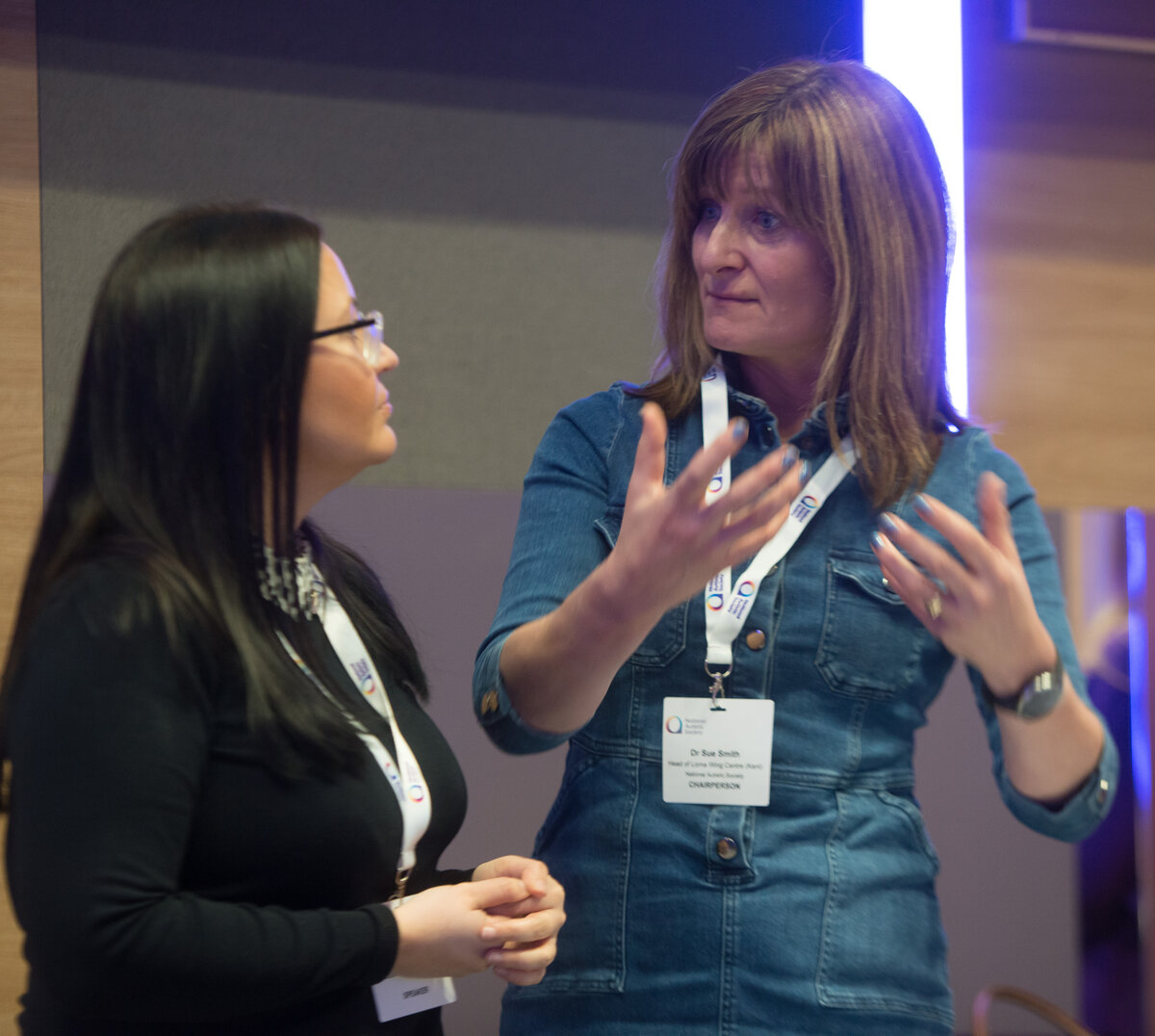Sensory challenges for autistic pupils
Published on 13 March 2017
Author: Phoebe Caldwell
Phoebe Caldwell is an Intensive Interaction practitioner working mainly with autistic children and adults, and the author of many books including The Anger Box: Sensory turmoil and pain in autism. In this article Phoebe explores the sensory challenges that autistic pupils may face in the classroom, and outlines ways in which staff can reduce sensory overload.
Research seems to suggest that autism is related to connections between different parts of the brain, or between individual nerve cells (Johansson, 2012). The nerve cells may be over-connected, in which case message processing is flooded by nerve cells firing all over the place, or under-connected, in which case the messages never reach the correct processing area.
Messages may be being sent to the wrong processing area, in which case one sense is being interpreted as another, as in synaesthesia. It is difficult to understand a child who loves to bite babies because she hears their cries as beautiful ribbons of light, not as signs of distress. Our problem is that we base our responses and strategies on our interpretation of the sensory world we share and not that of the child. On top of this, each child is different, so one resolution of their difficulties will fit that child, not all children.
Sensory issues in school
In 1995, Gail Gillingham published a book called ‘Autism – Handle with Care’. Ahead of its time, its main thrust was that due to the sensory distortions they experience, children on the autistic spectrum need ‘visual and auditory tranquility’. These requirements are difficult to achieve in school, which by its nature involves a high level of stimulation, movement, colour, noise etc.
This is specially so where there are mixed classes of children with profound and multiple learning disabilities (PMLD) and those diagnosed with autism. The former needs a high level of stimulation and the latter, quietness.
The triggers to sensory problems are twofold: environment and inadequate teacher training.
Environment
The first is environmental. Schools for autistic children are normally commissioned and designed (and sometimes governed) by people who do not understand the nature of sensory distortions experienced by autistic people. An excellent book, ‘Aldo goes to Primary School’, is written by architects with an interest in autism, and addresses the problems triggered by plans that may look splendid on the drawing board but which result in spaces which echo, are over-bright and have inadequate quiet spaces where a child can retreat when sensorily overloaded (McNally, H et al, 2013). Teachers are at the sharp end of the behavioural consequences of design.
Inadequate teacher training
The second group of problems centre round inadequate teacher training. Our understanding of the nature of sensory distortions is expanding so rapidly that many teachers will have been trained before it was included in their syllabus. It is only now included in the diagnostic DSM V as part of the diagnostic characteristics.
Tight budgets have restricted teacher’s access to up-to-date research. I am still visiting schools where teachers (who may be very good teachers as such), are in charge of educating autistic children but have absolutely no understanding of the struggle these students are experiencing to make a coherent picture of what is going on around them, let alone pay attention to the task.
For example, a child gets under the table and builds a protective cave of furniture around herself before she can do her homework, suggesting to her teachers that she is having problems focusing on the task rather than the distractions in her environment. I lend her a pair of acoustic noise reduction headphones designed to cut out background sounds. Within half an hour the standard of her work shoots up. Her teachers are distressed: ‘We didn’t know, nobody told us’.
Reducing sensory overload
While autism embraces the whole range of intellectual ability, we cannot assess the cognitive level of a child unless we have first addressed their sensory deficits. We have no way of telling how clever they are unless we can deal with their sensory overload, described to me by a child as ‘like having a Molotov cocktail in the brain’. Everything fires at random.
Vision
Redesigning (simplifying) the classroom environment can help:
"All decorations were removed and walls and furniture were made one colour. The teacher wore dresses of the same colour and went without watch, jewellery or ornament. Self-stimulation, inappropriate behaviour and inactivity were reduced and on-task behaviour was increased."
(Duker P & Rasing E. 1989).
One current source of overstimulation is the brightly coloured wallboards with corrugated edges found in almost every classroom in the country. Decorative as these are the wriggling edges are almost impossible to process, triggering painful overload to the extent that some children try and tear them off the walls – and get into trouble for doing so. Particular processing difficulties can result from people wearing bright clothes, especially the current fashion for black and white and wearing different coloured or patterned clothes.
Ofsted inspectors are not always in sympathy with a bland environment since they may also lack understanding of the difficulties experienced by autistic children as a result of sensory overload.
For those who may still have doubts about the reality of Irlen syndrome, brain scans are now available that provide empirical evidence of the dramatic reduction in random firing in the brain when the same child (doing the same task) is wearing, or not wearing, appropriate tinted lenses.
A very rough idea of whether or not a child may be helped by tinted lenses can be gauged by using an Optimum LED changing colour light bulb. This bulb can be stopped at a certain colour. Since they are extremely cheap it is easy to place them in strategic places so that the difficulty of processing is reduced.
The difference in attention is very marked and if this is a problem then the child needs a colorometric test. All the fragmenting bits of images they have floating around come to a halt and they can actually see what is going on. Not all opticians currently offering this test have experience of testing children with severe autism, so I recommend contacting Tina Yates.
Sound
Sound needs to be reduced. Some children find the normal level of speech extremely painful, especially certain frequencies in a high hard voice. Speak softly. Children who are having particular difficulties with sound should try noise reduction headphones such as BOSE. In fact, sound hypersensitivity is so common that schools really should assess all their students to find out whose attention is improved through the use of headphones.
Acoustic panelling can be used to reduce noise. We should be looking for simplicity and not bright ideas such as having ‘portholes’ in the wall for the children to look through – in one such case the children were terrified of them.
Other sensory sensitivities
As well as the commonly recognised overloading stimuli of vision and sound, not all teachers are aware of the problems caused by proprioceptive deficits (messages from the muscles and joints to the brain telling it what the body is doing). Children with these difficulties rush around banging themselves, climbing everywhere, running, jumping and swinging: anything to give them some picture of themselves. To help them we need to timetable in regular activity burst sessions, such as trampoline and vibration, several times a day. In some cases the most useful pressure garment is a squease vest.
It is very easy for a child to lose their sense of self, either physically through not getting the correct messages from their body, or because when they do express their negative feelings, these are rejected, no matter how urgent. It is extremely important to validate negative feelings no matter how socially unacceptable. The child needs to know what they are feeling is an accurate picture of how they feel. An on-line booklet, ‘A journey with Chris through HELP’ (Bradley, E. & Caldwell, P. 2016) is designed to help professionals and parents consider what may be the relevant problem for this child.
Finally we need to communicate with a child in a way that has meaning for them and does not cast extra strain on their processing system. To do this we respond to their body language to engage with them, e.g. using Intensive Interaction (Caldwell, P., 2013).
Until we tackle the sensory difficulties an autistic child is experiencing, we cannot assess their cognitive level and their school experience can be one of survival rather than education.
Further reading
- Caldwell, P. (2014). The Anger Box. Pavilion Publishers
- Caldwell, P. (2008) Using Intensive Interaction and Sensory Integration. Jessica Kingsley Publishers
- Caldwell, P. Website resources
- Gerland, G. (2003) A Real Person: Life on the Outside. Souvenir Press Ltd
- Johansson, I. 2012. A Different Childhood Inkwell Productions
- Williams, D. (1996) Autism an Inside Out Approach. Jessica Kingsley Publishers
- Williams, D. (1998) Like Colour to the Blind. Jessica Kingsley Publishers
- Williams, D. (1998). Nobody Nowhere. Jessica Kingsley Publishers
- Williams, D. (1998). Somebody Somewhere. Jessica Kingsley Publishers













